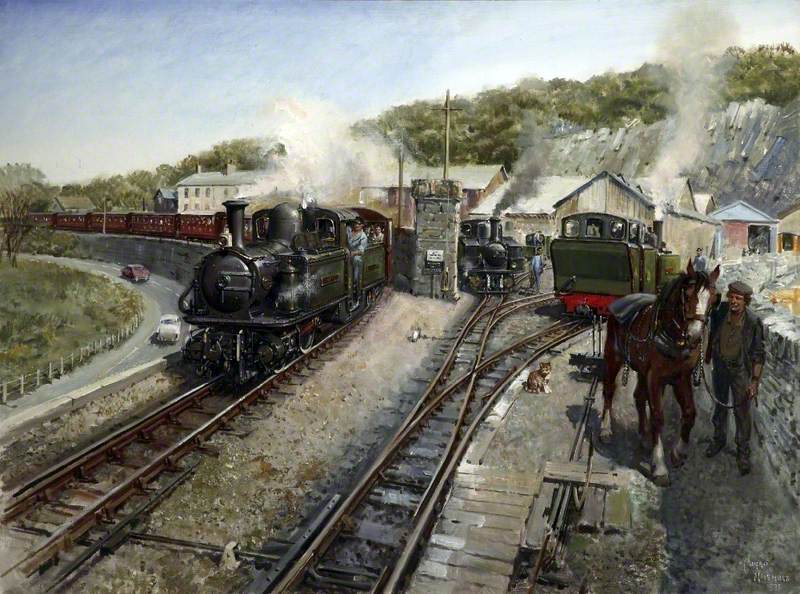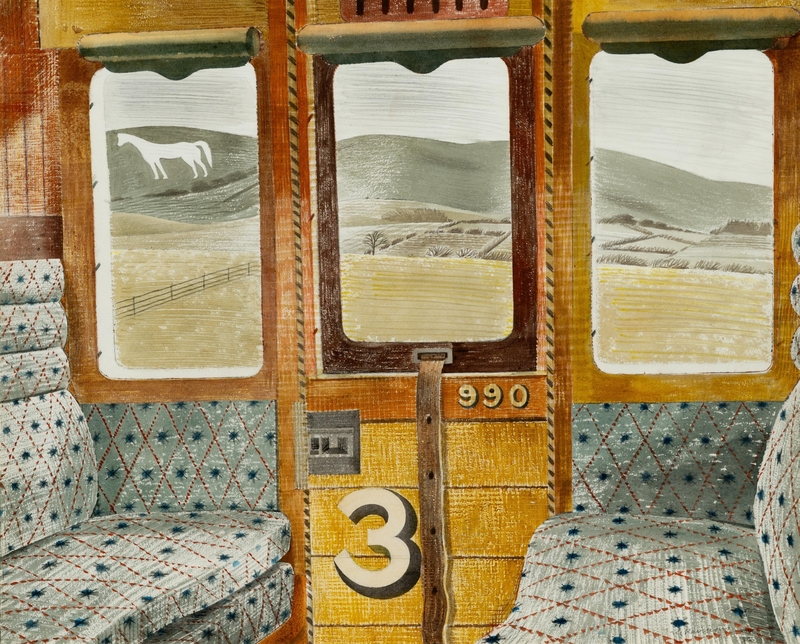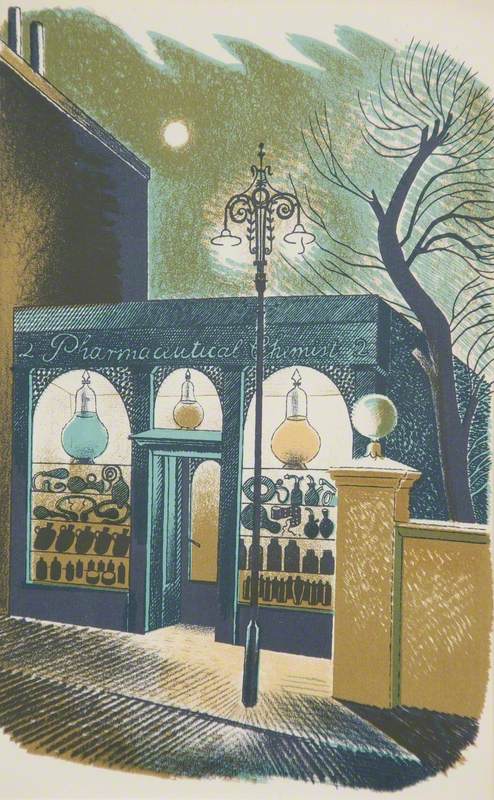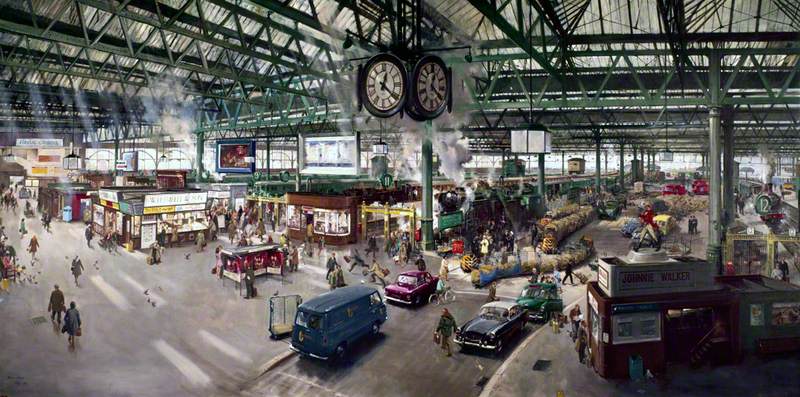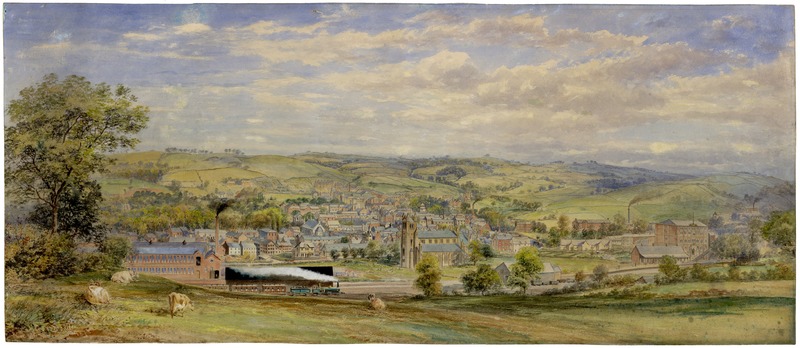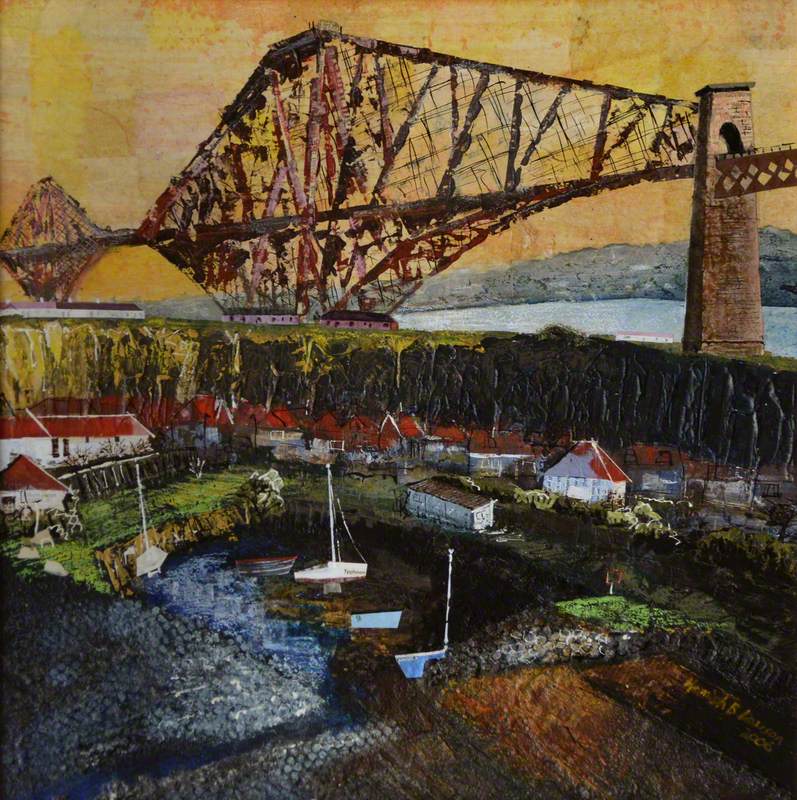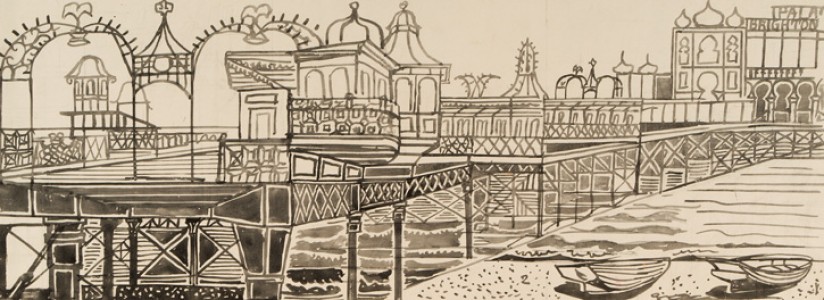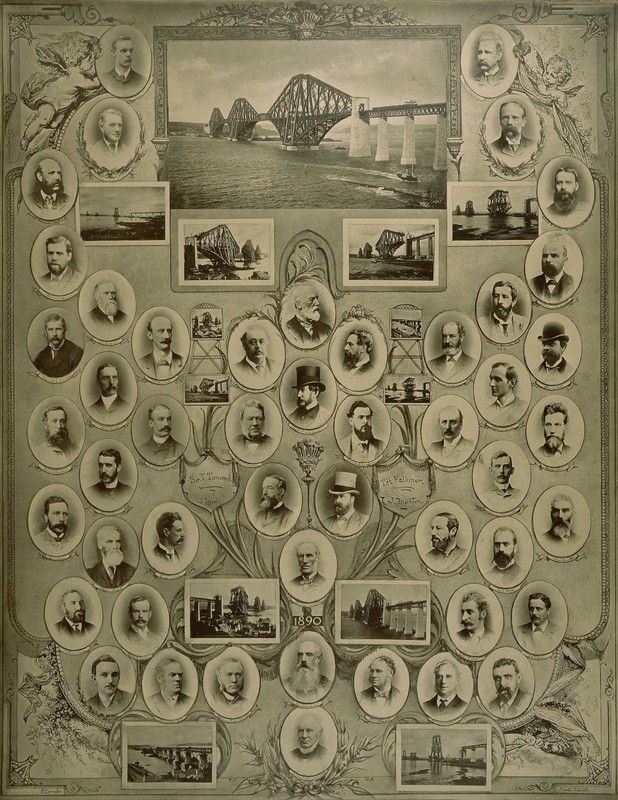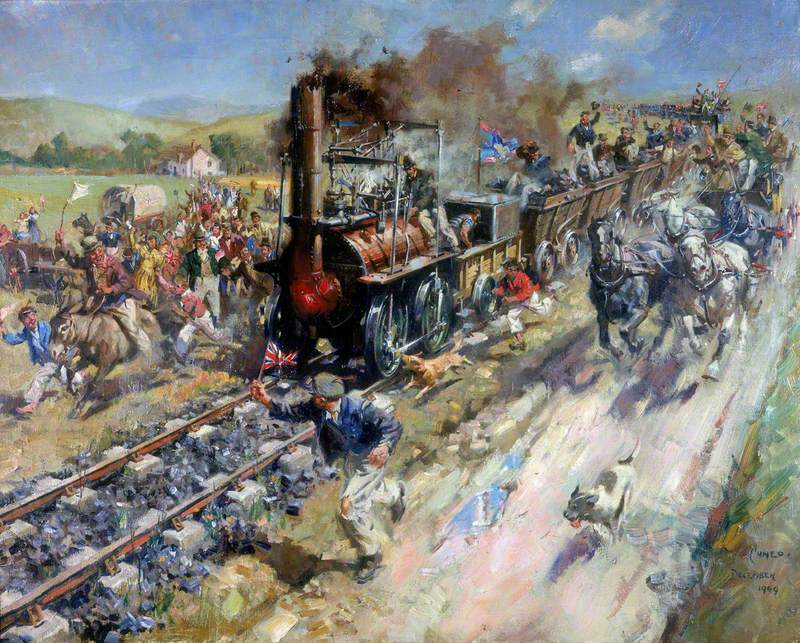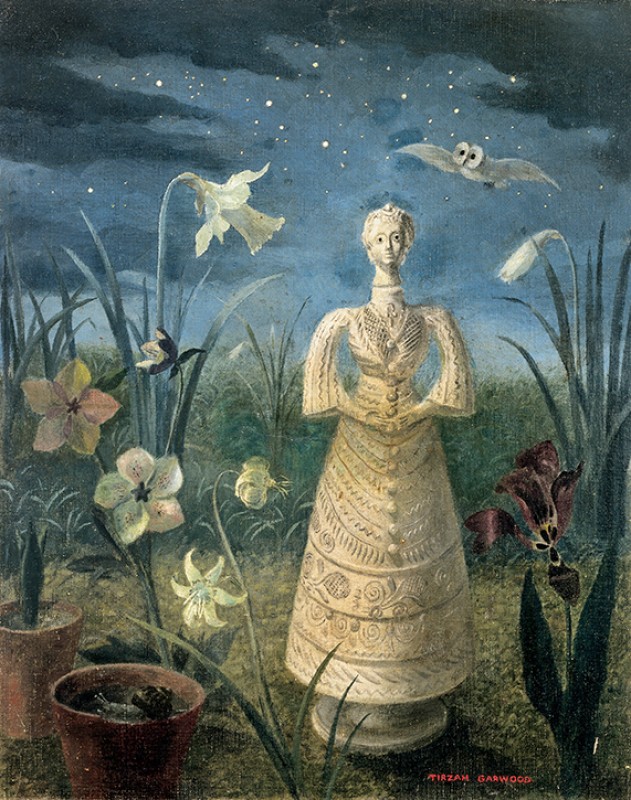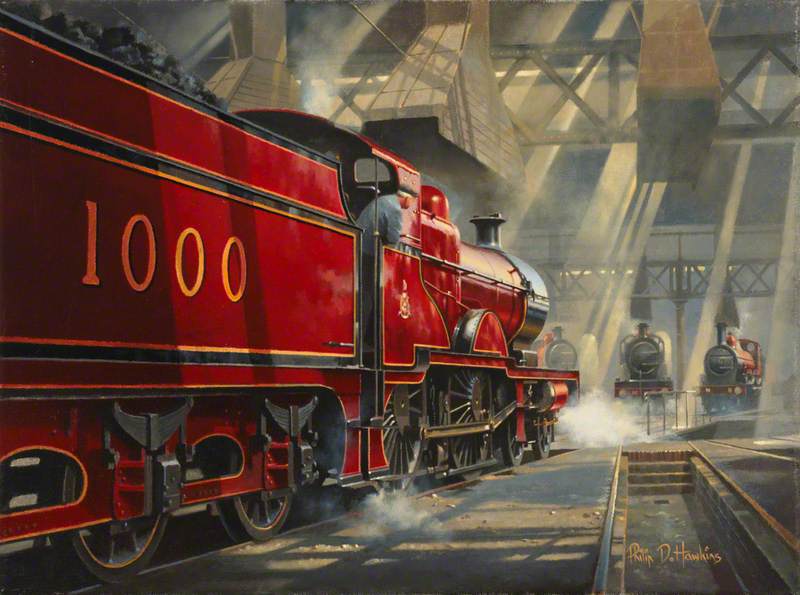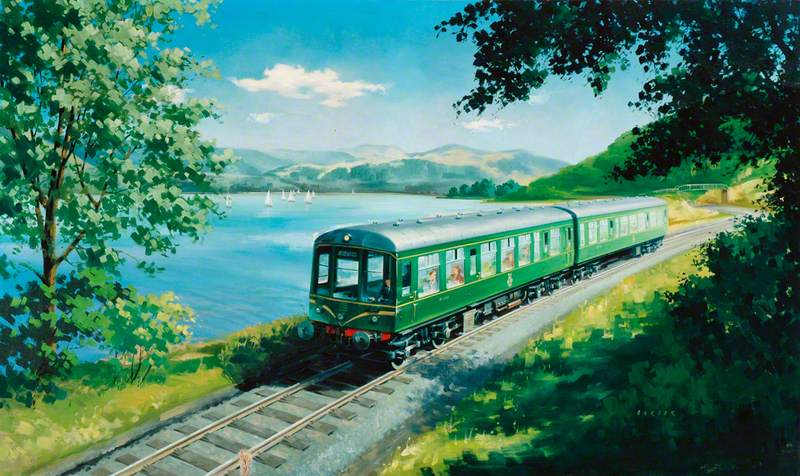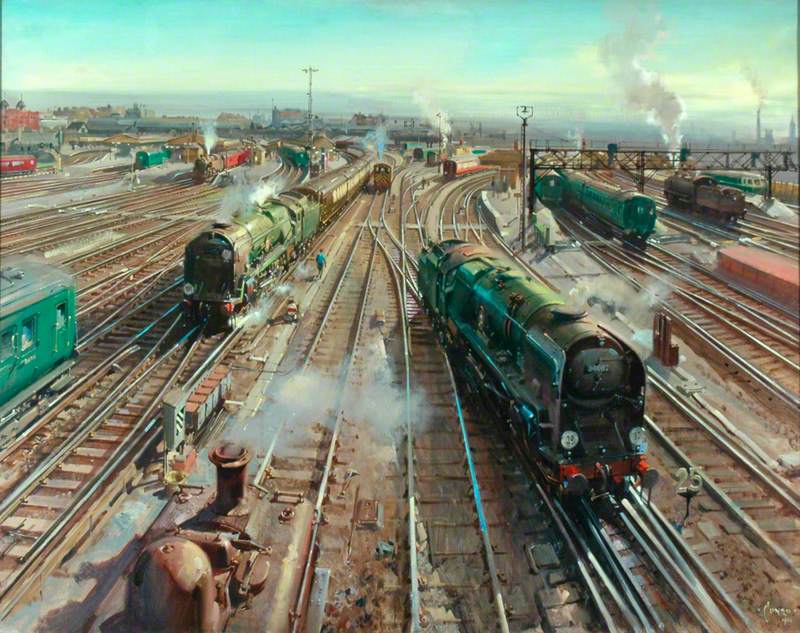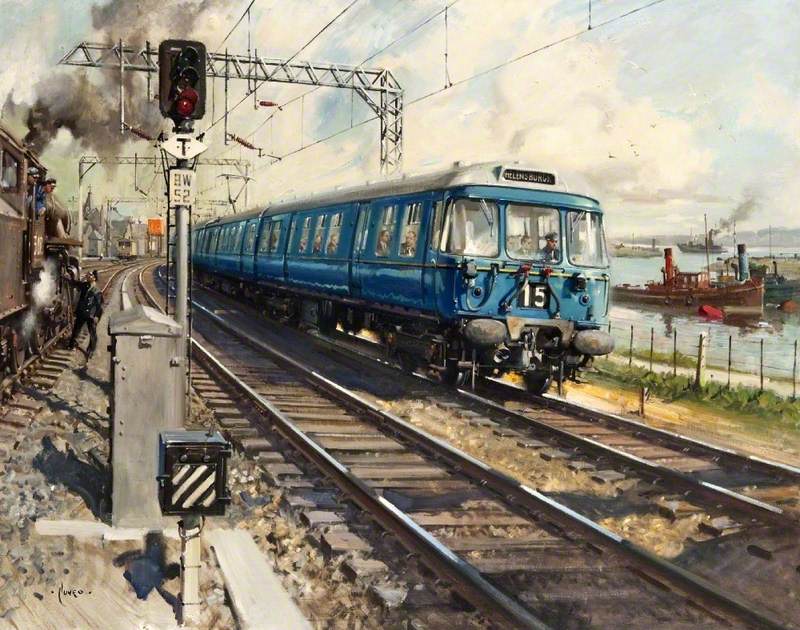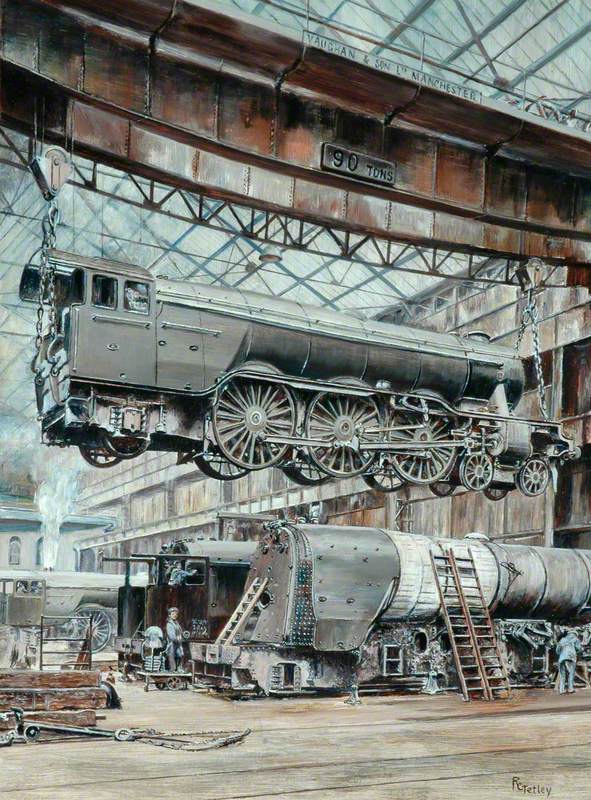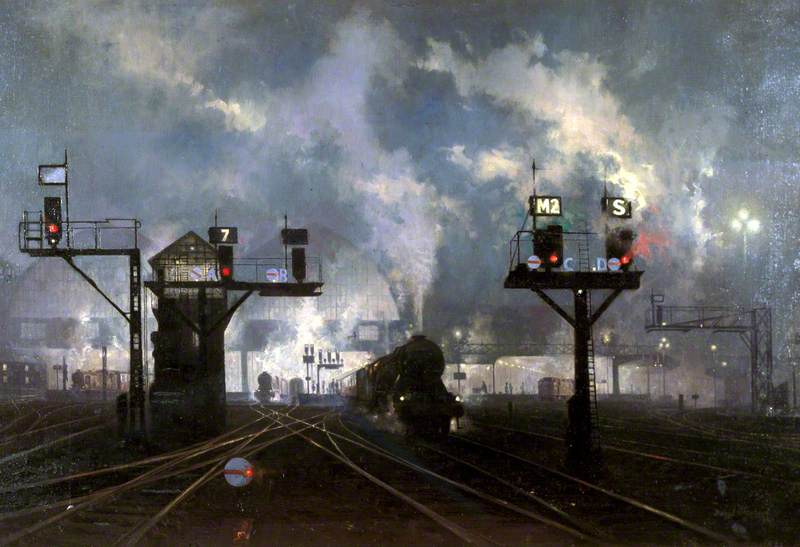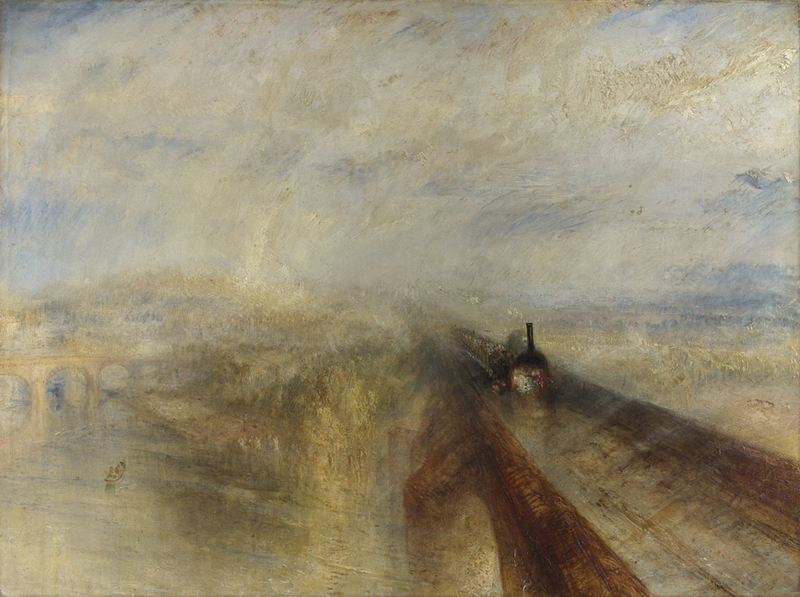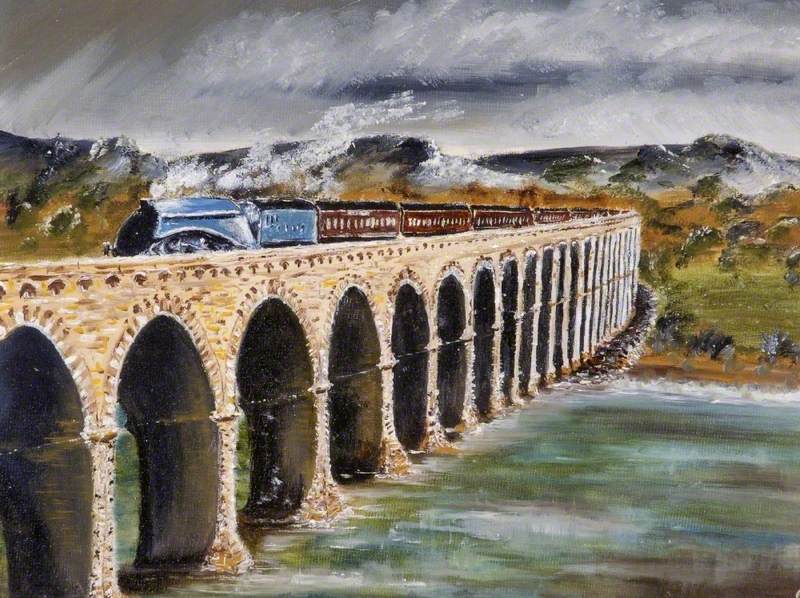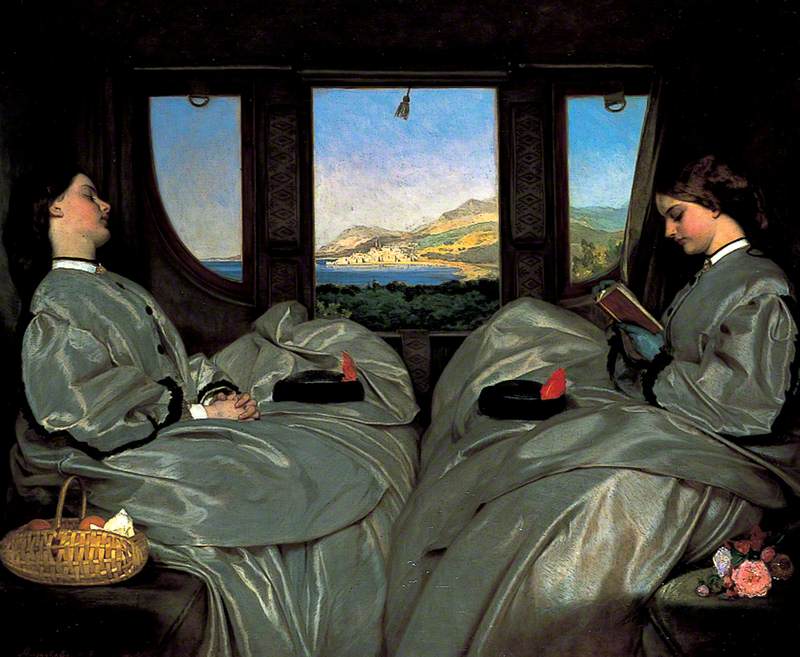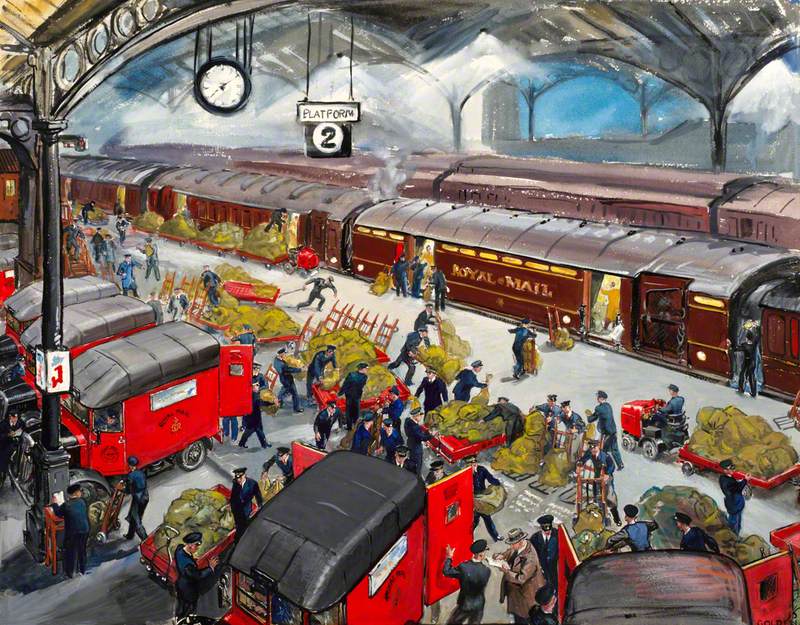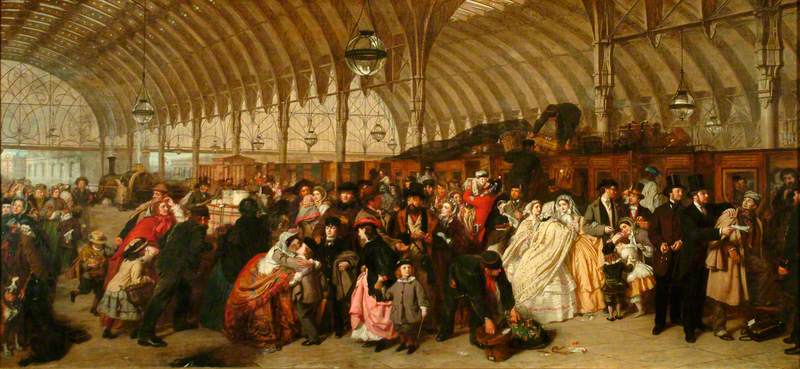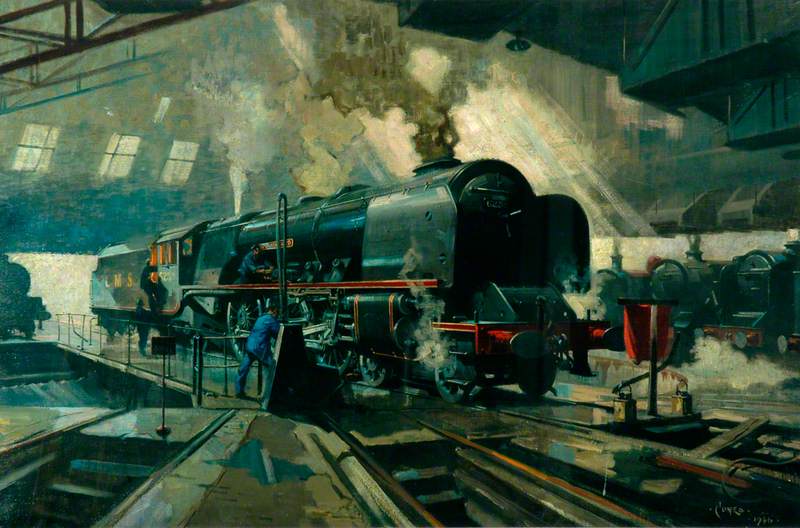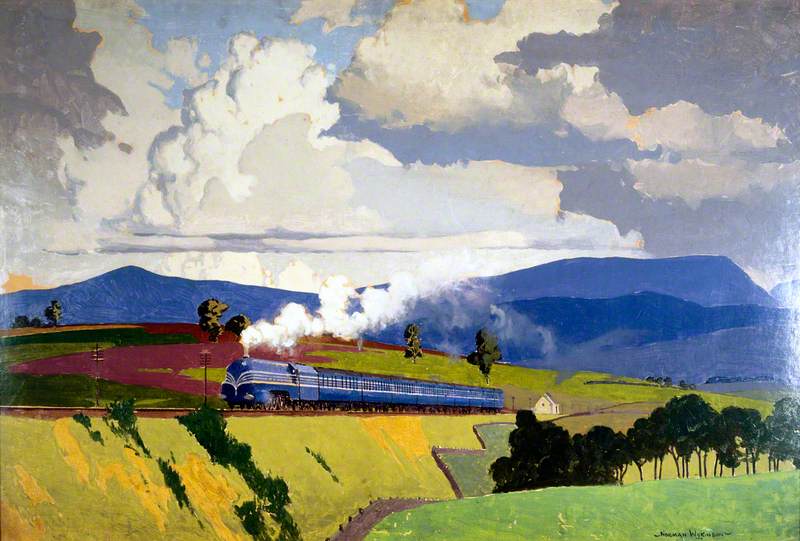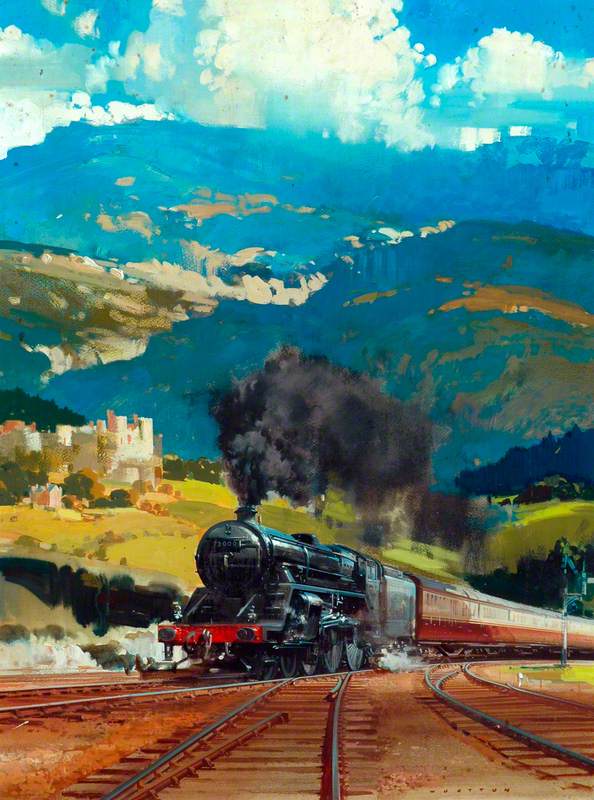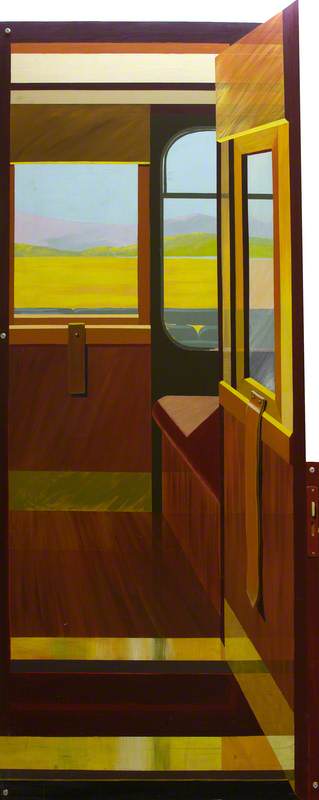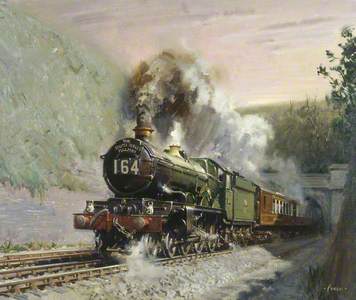This artwork is one of the top 20 UK railway artworks voted for by the public as part of Railway 200.
Terence Cuneo is a respected name amongst those who like their railway art, so it is no surprise to see he has six artworks in the Railway 200 competition. We are going to take a closer look at his 1967 Welsh painting Talyllyn Railway on the Dolgoch Viaduct. Cuneo loved to depict trains within magnificent scenery, and Wales, with its miles of track and dramatic landscapes, is a perfect location for railway art. Historical working railways were of special interest, as in the Blaenau Ffestiniog site below.
A prolific painter, whose parents were also esteemed artists, Cuneo is said to have produced over 6,000 paintings in his lifetime. A gift of a model steam engine to a very young Cuneo sparked a love of trains that burned throughout his career. Cuneo's daughter Carole reports that her father built a Gauge 1 model railway around the garden, complete with realistic tunnels and bridges! You can read more about this on the website Carole curates, in honour of her father's legacy.
Emerging from the Severn Tunnel
c.1971
Terence Tenison Cuneo (1907–1996) 
Before we have a closer look at the Talyllyn painting, a quick Welsh lesson might be useful! Talyllyn means 'end of the lake' and Dolgoch means 'red meadow'
This short video explains the pronunciation of Talyllyn.
View this post on Instagram
But now, on to our painting! Built in 1865, the greatest obstacle on the Talyllyn railway route in North Wales was the gorge of the Dolgoch river. A viaduct with three spans over two piers was built across the gorge, 50 feet above the river, to maintain an even gradient. An engineering feat that Cuneo clearly found impressive, as these magnificent red brick arches take up most of the Talyllyn painting.
Talyllyn Railway on the Dolgoch Viaduct
1967
Terence Tenison Cuneo (1907–1996) 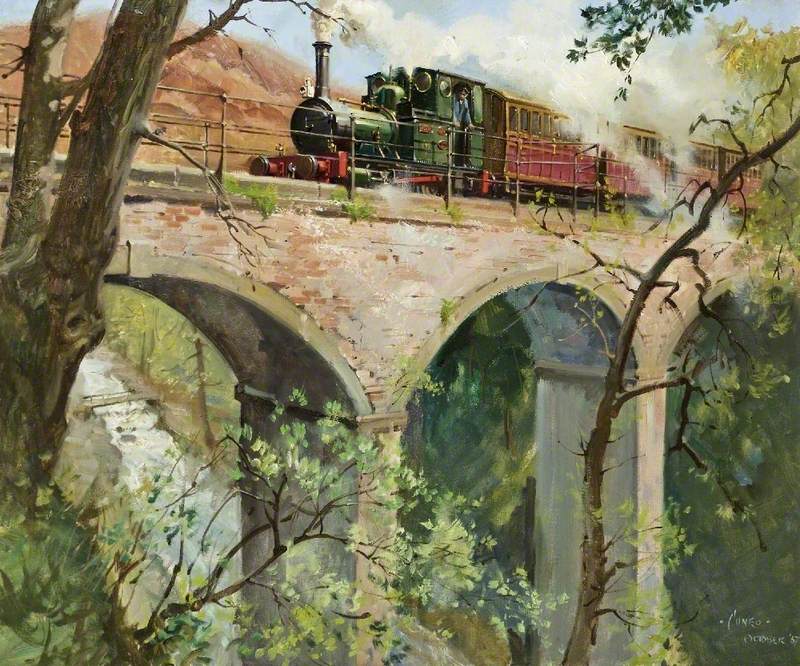
The classic apple green 10-ton engine with its polished brass and smart red and gold carriages sails from right to left across the viaduct. The engine was built by Fletcher, Jennings and Co. in 1866.
If you visit this spot (and you really should!) it is easy to see why it captivated Cuneo: he was inspired by the natural rocky walls of the narrow gorge, the cascading rivers and waterfalls and the mighty viaduct dwarfed only by the majestic mountains beyond. Welsh mountains similarly provide an astonishing backdrop for his historical painting of the world's first steam locomotive journey of 1804, when Richard Trevithick's locomotive ran 9 miles from the ironworks at Penydarren to the Merthyr–Cardiff Canal, south Wales.
First Journey of Penydarren Locomotive
1963
Terence Tenison Cuneo (1907–1996) 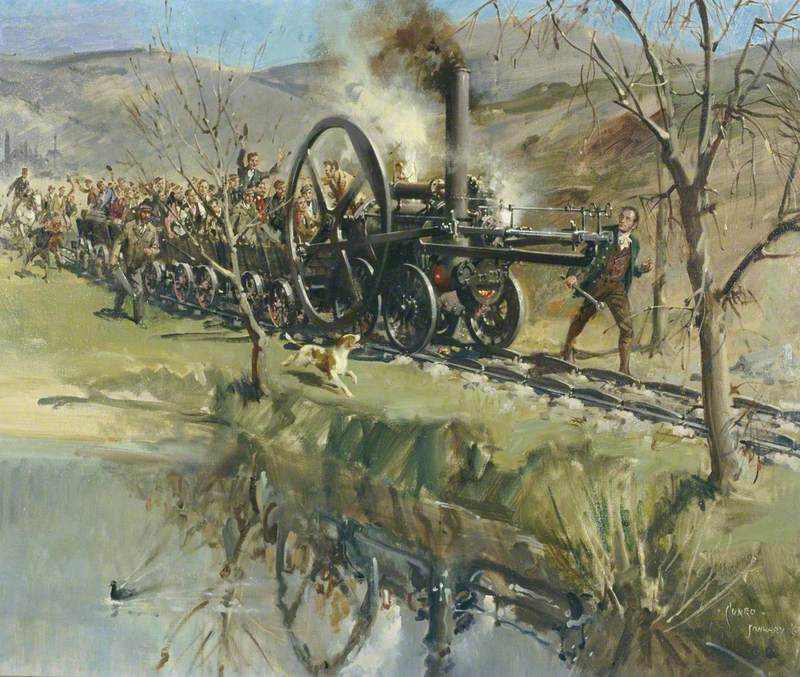
Even if you are not a regular gallery visitor or a railway enthusiast, you may recognise the style of Cuneo's work. It has appeared on book covers, on posters, in model railway catalogues, and even on Royal Mail postage stamps. Distinctive for their bright colours and attention to detail, Cuneo's images capture the essence of movement.
The realism of his work conjures the smell of hot oil and soot, the hiss of a steam safety valve and the shriek of a whistle. You can read about his hair-raising railway adventures in his fascinating 1984 book The Railway Painting of Terence Cuneo.
Poster for Dolgoch Station
c.1960, lithograph by Terence Cuneo (1907–1996), Narrow Gauge Railway Museum, Tywyn Wharf Station, Talyllyn Railway 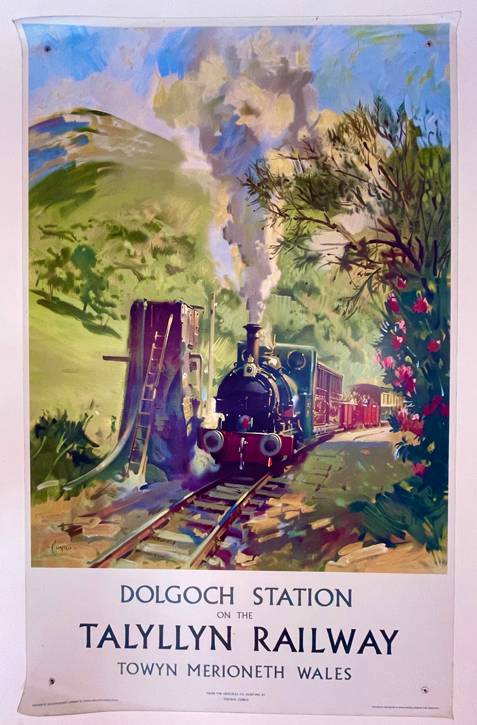
Why have so many visitors, including Cuneo, been drawn to the Talyllyn railway? The world's oldest preserved railway, it has been running continuously since 1865. It is a major tourist attraction in North Wales, whilst also drawing in artists, rail experts and engineers all year round.
Nicknamed 'The Railway with a Heart of Gold', it is a 14-mile narrow-gauge track, skirting the stunning Snowdonia National Park, running from the small coastal town of Tywyn to the rocky river gorge of Nant Gwernol, near Abergynolwyn. The route takes in ancient woodlands and magnificent waterfalls. Grazing sheep dot the landscape while red kites and buzzards soar above.
The Dolgoch Gorge and Viaduct today, where the engine from Cuneo's painting still runs
2025, photograph by Candy Bedworth 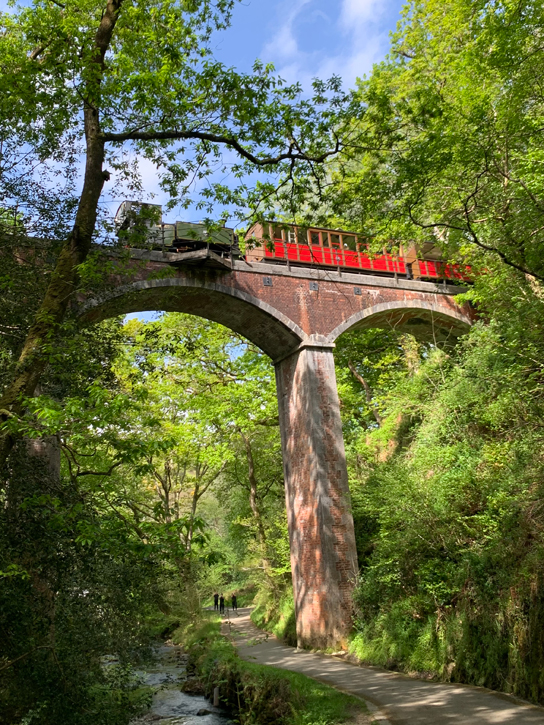
The film Railway with a Heart of Gold is available to watch on YouTube. Filmed in the early 1950s by Carson (Kit) Davidson but released in 1965, it is a charming 14-minute insight into this beautiful piece of railway history.
The Talyllyn railway provides an amazing insight into the working history of the North Wales slate industry. The original purpose of the Talyllyn railway was to carry slate from the Bryn Eglwys quarry to the coast. The slate quarries closed in 1947, but the line trundled on, carrying people and parcels. When the line fell on hard times, hard-working volunteers stepped in and saved this precious piece of cultural heritage. The image below shows the Penrhyn slate mines north of Talyllyn, the landscape scarred by industrial processes.
Penrhyn Slate Quarries, near Bangor, North Wales
c.1850
unknown artist 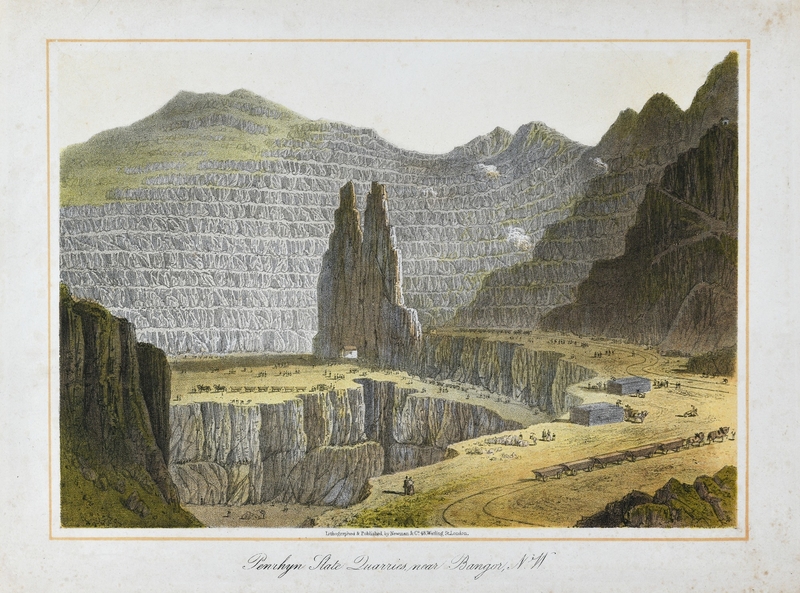
Before Terence Cuneo, this remote, magical spot seems to have inspired other famous visitors, including the Rev. Wilbert Awdry (of Thomas the Tank Engine fame). Awdry visited the railway on a family holiday, and joined the newly formed Railway Preservation Society in 1951, returning often as a volunteer. Several of the stories and engines in The Railway Series come from his real-life experiences at Talyllyn. Awdry's study is now preserved in the Narrow-Gauge Railway Museum of the Talyllyn Railway.
Rev. Awdry's study, Narrow Gauge Railway Museum
2025, photograph by Candy Bedworth, Narrow Gauge Railway Museum, Talyllyn Railway 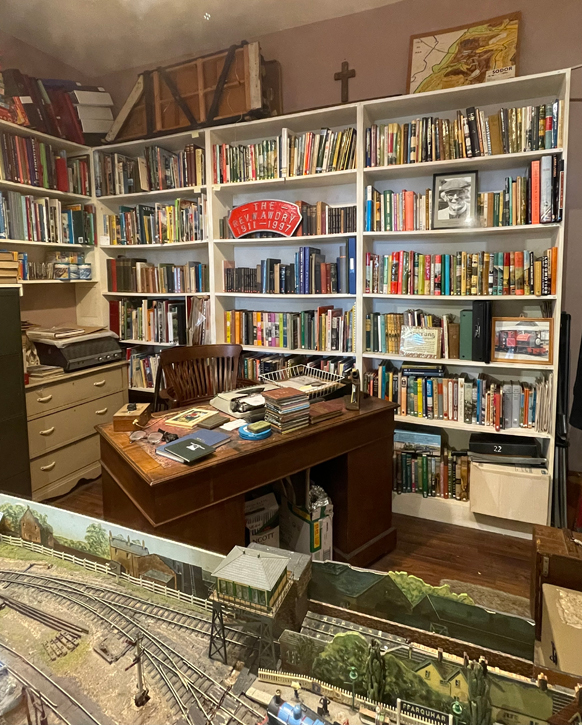
Ealing Film Studios felt the railway was the perfect model for their 1953 comedy The Titfield Thunderbolt. In the film, a group of villagers attempt to run a rail service on a disused branch line after closure. Film script writer T. E. B. Clarke spent a day on the Talyllyn railway in 1951, and he included some of the stories from the volunteers and their preservation work in his script. Sadly, the film itself was shot elsewhere.
The Dolgoch Engine, preserved in all its finery, can be seen today at Talyllyn Railway, North Wales
2025, photograph by Candy Bedworth 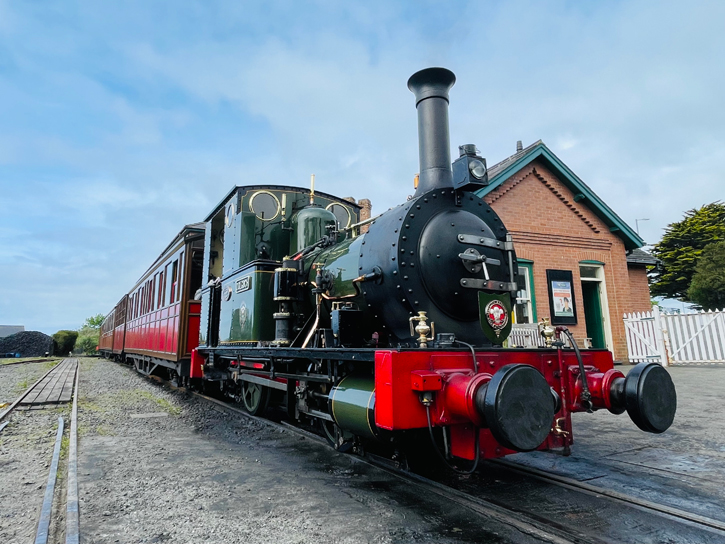
More recent inspiration comes in the form of a fitness challenge. Since 1984 there has been an annual running event called 'Race the Train'. Runners from across the UK compete to run the 14-mile circular route faster than the steam train! Talyllyn certainly continues to excite and inspire!
Oh, and one final question for you. Apparently, from 1953 onwards, Cuneo often added a miniature mouse to his paintings, as a good luck symbol! Can you find a llygoden (the Welsh for mouse) in the Talyllyn painting? Here it is again, for closer inspection!
Talyllyn Railway on the Dolgoch Viaduct
1967
Terence Tenison Cuneo (1907–1996) 
Candy Bedworth, writer
This content was funded by Railway 200
About Railway 200
Railway 200 is a cross-industry, UK Government-backed, partner-led celebration of the 200th anniversary of the birth of the modern railway, commemorating the opening by George Stephenson of the Stockton and Darlington Railway in the North East of England in 1825, a journey that changed the world forever. It explores the past, present and future of rail, and how it has shaped our lives and livelihoods. Numerous activities and events are planned throughout 2025, many of which are listed at www.railway200.co.uk
